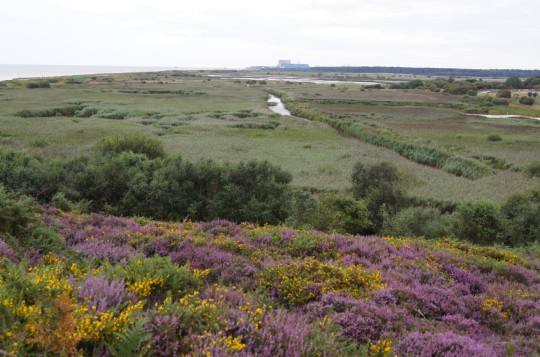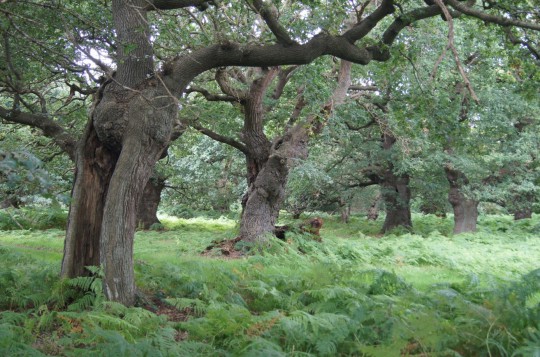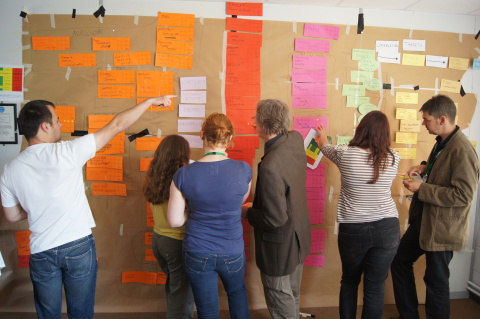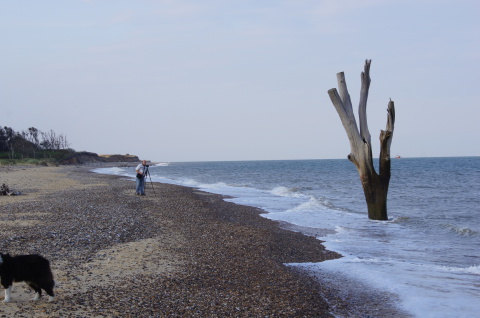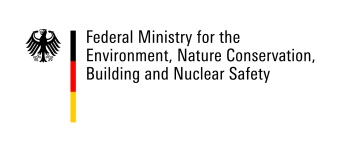Student – sector MARISCO workshop for Suffolk Coast and Heaths Project landscape, United Kingdom
Peter R. Hobson & Pierre L. Ibisch.
General setting
In July 2012 a MARISCO workshop was delivered over a period of three days at Writtle College, United Kingdom[1]. Its primary aim was to build employability skills into the Masters programme in Conservation Management under Global Change and at the same time provide the management team for the Suffolk Coast and Heaths (SCH) Area of Outstanding Natural Beauty (AONB) (East Anglia) with a detailed situation analysis for their landscape. Apart from the students other participants included professional staff from the Environment Agency, Natural England, National Trust, Braintree Planning Council, DEFRA (Department for Environment Food & Rural Affairs) as well as staff from the selected conservation site.
[1] With support and funding from HEFCE Teaching and Learning.
The workshop followed the standard structure and guidelines for MARISCO but without a site visit and Ecosystem Diagnostics Analysis. That said, the choice to combine student learning with a real case study and the presence of professional staff was novel. The two main objectives of the workshop were as follows:
- To produce a situation analysis for SCH that will contribute towards the management planning for the Suffolk coast and heaths landscape
- To induct and coach the MSc students in the use of MARISCO as a conservation planning process
The group was large enough to split up into two smaller teams, and to make sense of the second objective it was decided that the students should be divided up amongst the practitioners.
After a brief introduction by the director of the conservation site and the workshop leader to help set the context and describe the process, each team was given a dedicated space and under the instruction of a facilitator was tasked with producing a situation analysis for the study landscape. The characteristically iterative approach made it easy to insert necessary stage-breaks for the participants to review and evaluate their progress before moving to the next phase of the task.
Box 1: The Suffolk Coast & Heaths Area of Outstanding Natural Beauty (AONB)
Situated on the coast of East Anglia, the Suffolk Coast & Heaths Area of Outstanding Natural Beauty (AONB) encompasses 155 square miles of predominantly cultural landscape overlying a ‘fluid’ geology of sands and gravels with small lenses of clay and peat. It is shaped as a narrow strip of coastal land stretching over 80km from Kessingland in the north of the county to Shotley Peninsula in the south, and occupies much of what is locally referred to as the ‘sandlings’ along the Suffolk Coast. With its distinctive character the landscape was designated in 1970 as an Area of Outstanding Natural Beauty (AONB) - a landscape status equal to a National Park. It is now one of 46 AONBs within England, Wales and Northern Ireland. A long history of land use and change has created a complex mosaic of wildlife-rich wetlands, ancient heaths, small ancient semi-natural woodlands, enclosed mixed farmland, windswept shingle beaches and historic towns and villages. . A significant portion of the area is protected under national and international law because of the valued international conservation status of several habitats and species. It is this mixture of habitats and their proximity to one another that gives rise to the wildlife value of the area. Rare birds such as the woodlark, nightjar, bittern, avocet, marsh harrier and Dartford warbler have well established nesting grounds within the region. Other species of national importance include the European adder, otter, water vole, natterjack toad, silver studded blue, and the ant-lion. A partnership formed by 26 organisations including RSPB, National Trust, Forestry Commission and Suffolk Wildlife Trust, under a project director work together to manage the area as a living landscape. However, 80% of the Sandlings heaths have been lost since the 1930s, so what remains is a precious and incredibly scarce resource. Human disturbance is a key challenge for the future as it has a huge impact on the estuaries, thus exposing large numbers of wintering birds to continued disturbance when feeding.
Review of the workshop process and outcomes
The advantage of having a mixture of scientists and practitioners from different disciplines and organisations was apparent from the speed of progress made and the success of the workshop. The AONB is a complex landscape with many conflicting interests of land use and it was important to be able to capture as many of the issues and problems as possible, not just the obvious ones. The level of detail covered in the discussions about various threats and socio-economic problems were indicative of the depth of understanding and knowledge shared between some of the scientists and practitioners but also of the mixture with academics from Writtle College. It also helped to have practitioners present with appropriate qualifications in ecology and environmental science.
It took a while for the conservation practitioners to suppress some of their more traditional training towards thinking in terms of prescriptive-led outcomes and to embrace the ‘step-wise’ approach used in MARISCO to evaluate threats and vulnerability. For instance, there was a tendency to ‘jump ahead’ with prescriptive-style solutions and strategies before a full analysis of the situation was completed. As for the academic members of both teams, they were more confident about identifying and describing in detail the stresses and threats to the biodiversity objects caused by human activities, but less sure about the practical measures taken to mitigate these problems. There were also clear differences between policy officers and managers in knowledge and understanding of the kinds of threats and their causes likely to be found in a complex and mixed use landscapes. Those staff working for regulating and legislative agencies were much more aware and appreciative of the complex problems and issues affecting biodiversity, whilst scientists and managers demonstrated a rather more linear ‘cause-effect’ understanding of problems. This should come as no surprise as staff working for government agencies such as DEFRA and the Environment Agency are exposed much more often to multi-factorial problems that often require inter-disciplinary solutions.
Throughout the two day event teams were encouraged to work in mixed-skilled groups including both postgraduate and undergraduate students studying conservation ecology and management at the College. Whilst the blended approach provided a robust body of knowledge and understanding within each team it also opened up opportunities for group members to discuss problems and issues sometimes at the expense of getting things done! Too much talking and rather less doing!
Student participation
Historically, in the field of conservation there are limited opportunities open to students to develop employability skills and sector-related competency whilst completing their studies. Too often, highly qualified postgraduates fail to enter into the job market at the appropriate level of employment because of the perceived lack of essential applied skills and experience. A 2011 survey carried out by Lantra, the UK’s Sector Skills Council for land-based and environmental industries, on the provision of employability skills identified a short-fall in the ability of university-leavers and prospective employees to carry out competently a range of sector-related tasks. It included in the list of desirable skills required by university leavers but currently lacking in their portfolio project planning, leadership, working in mixed-discipline teams, oral communication, decision-making and negotiating. The whole process of MARISCO is designed to be a learning and communication platform for all participants. It encourages individuals to work together in a collaborative way, to seek consensus in potentially conflicting issues through constructive dialogue, and to communicate information in a structured and integrative way that builds towards project planning. In the case of the Suffolk AONB workshop the M.Sc. students were able to experience at first hand the employment of these kinds of skills by participating alongside the experienced scientists and practitioners. From a pedagogic perspective it was a valuable exercise, not just because of the applied and experiential learning gained by the students, but also for the opportunity it gave staff to be able to assess the quality and content of their postgraduate provision against the knowledge and performance of professional members of the sector. A rapid exercise of matching MARISCO activities and outputs against UK Quality Assurance criteria and benchmarks for postgraduate and graduate transferable skills indicates a range of appropriate sector-related skills are covered when students are encouraged to participate in the process. Consequently, the teaching and training in the use of MARISCO is delivered in two of the modules of the MSc programme.
Meeting expectations of the sector
A number of common themes emerged by the end of the three days, in particular, the perception amongst the professional staff of the level of complexity manifest in the method. Most participants worried about the ability to repeat the exercise in their own environment without the support of an experienced facilitator. Related to this issue was the amount of time needed to effectively carry out MARISCO. A frequent complaint amongst conservation employees is the little time available to engage in important but time-demanding strategic exercises when faced with numerous other responsibilities. Put in this position, most conservation managers look for a ‘fast-track’ approach and solution to conservation problems and this encourages prescriptive-laden management strategies that rely too much on ‘cook-book’ solutions. Concerns relating to severe time constraints and the workload of professional staff, and the need to rationalise limited funding will continue to be an obstacle to strategic and effective conservation planning. It is unclear whether alternative, short-cut approaches such as evidence-based management are likely to provide appropriate outcomes. It is easy to see the attraction to time-pressed managers of referring to a compendium of scientifically-tested experiments for answers to conservation problems.
Another characteristic practice of conservation staff is to focus on the designated site or protected area rather than take a landscape perspective. Again, this reflects conventional practices of attempting to resolve problems at site level in isolation from the wider landscape. Compartmentalising landscapes, habitats and even environmental problems is deep-rooted in conventional practice that can obstruct more proactive approaches to planning for conservation. In the beginning, when the group discussed the geographical scope of analysis, it became clear how much pre-elaborated maps manipulate the spatial vision of sites to be analysed and managed. The larger the surrounding landscape visualised on planning maps, the more probable that planning teams are willing to think beyond existing conservation site boundaries.
In the final feedback on the value of the MARISCO workshop all participants recognised the strengths of the planning process but felt the approach was time-consuming. Amongst the comments, one of the clear advantages recognised was the level of detail of the project site and environmental problems revealed in the situation analysis.
Reflecting on the 3-days workshop and feedback comments from the participants the team confirmed that even with very knowledgeable staff MARISCO could not be effectively delivered in anything less than a full week. Ideally the process would be delivered in two parts over a period of 4 – 6 days. The workshop achieved less than half the outcomes in the space of three days.
Reference
Lantra, 2010/2011. England Skills Assessment 2010/2011. [pdf] Lantra. Available at: http://www.lantra.co.uk/Downloads/Research/Skills-assessment/England-Skills-Assessment-%282010-11%29.aspx [Accessed 21 July 2014].


